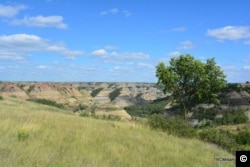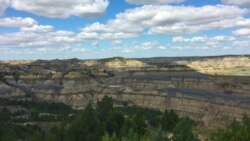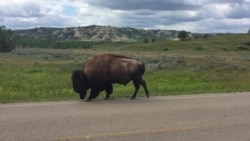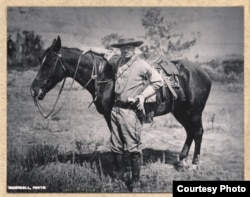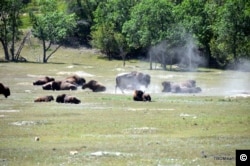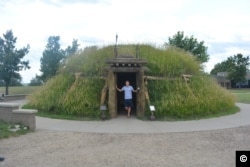This past June, 30-year-old Mikah Meyer set out from Washington, DC on a roadtrip across America to visit the more than 400 sites within the U.S. National Park system. And VOA has been following him as he travels from state to state.
Thanks to the stunning photographs and videos Mikah and his travel companion Andy Waldron have been sending us, we have a virtual front row seat to some of the most amazing landscapes within the U.S. national park system. As one observer recently noted, it’s almost as good as being there.
Mikah’s latest adventure across the northern states took him from the lush land and sparkling waterscapes of Minnesota to the open prairies of North Dakota.
The Great Plains
Mikah said he was “super excited" to get to North Dakota because he believes many people like himself have little understanding of the state and often don’t even know where it is on a U.S. map. “So for me personally… I was really excited to discover the unknown.”
“Anyone can love the mountains but it takes a soul to love the Prairie,” wrote Willa Sibert Cather, an American author who wrote about frontier life on the Great Plains. Mikah says he thought about that line often as he visited some of those weathered grasslands during his visit to several sites in North Dakota.
Theodore Roosevelt National Park features a seemingly endless expanse of prairie and badlands -- heavily eroded, horizontal rock formations -- which Mikah discovered change color depending on the weather and angle of the sun.
“What I've never understood about the geology there is that essentially it was the Great Plains just like everything else, and then it eroded to expose all of this amazing geology,” Mikah explained.
Also referred to as the North Dakota Badlands, the area is home to an ecologically diverse collection of animals including bison, feral horses, elk, deer and prairie dogs.
Mikah recalled how thrilled he was when a giant bison (pronounced bizon by the locals) trotted along the side of a road where he was parked on a recent windy day, paused for a brief moment to take a look at him, and kept moving.
The conservation president
The park is named after U.S. president Theodore Roosevelt, who -- as a skinny young man from New York -- traveled to the Dakota Territory in September,1883, to hunt bison. By the end of his 10-day hunting trip, he had purchased a ranch and entered the cattle business.
It was during this time that he fell in love with a place he once described as "a land of vast silent spaces, a place of grim beauty." Roosevelt's time in North Dakota reinforced his interest in conservation; a passion that ultimately influenced his policies as president.
“He could not have imagined how his adventure in this remote and unfamiliar place would forever alter the course of the nation,” reads the National Park Service web page in describing the man who would become America’s 26th president. “The rugged landscape and strenuous life that TR (Theodore Roosevelt) experienced here would help shape a conservation policy that we still benefit from today.”
During his time in the White House, Roosevelt established many national parks, wildlife refuges, forests and monuments, and supported the idea of an agency that would manage them. On August 25, 1916, President Woodrow Wilson signed the act which created the National Park Service, bringing Roosevelt's vision to reality.
Native American influence
North (and South) Dakota got their names from the Dakota tribe that called the area home. Dakota is also the Sioux Indian word for "friend."
That Native American presence “could be felt everywhere” during his journey across North Dakota, Mikah said, and especially at the Fort Union Trading Post National Historic Site.
“What was especially interesting about this place is it was the first fur trading post in the area and it was also the most successful one,” he said. “It ran for 39 years, all with peaceful operations. So for me it was really interesting to see how all these different cultures came together over their shared economic prosperity,” he added.
Native American influence was also evident at the Knife River Indian Villages National Historic site, where visitors can explore the history of the Northern Plains Indians.
The tribes living in the Upper Missouri River Valley developed unique circular earthlodges to fit their sedentary lifestyle. Mikah said it was fascinating to learn how they lived on the river bluffs during the summer, which allowed them to monitor the movement of the bison herds. In the winter the tribes moved down to the river, where there was shelter, firewood and more game.
They were in essence farmers living in villages along the Missouri and its tributaries. The area was a major Native American trade center for hundreds of years, prior to becoming an important marketplace for fur traders after 1750.
Coming attractions
In the coming days, Mikah and his travel companion Andy Waldron plan to head back east to Minnesota and then on to Wisconsin. To follow Mikah and learn more about the places he’s traveling to, he invites you to visit him on his website.





